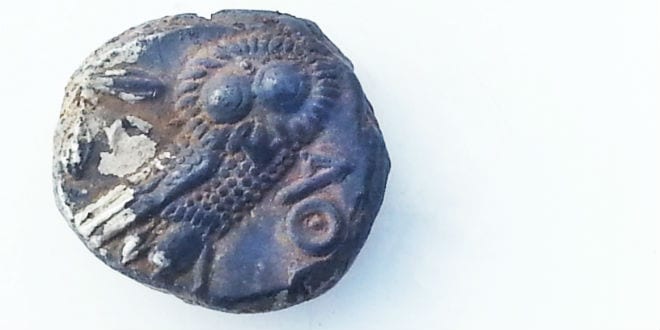The Israeli Antiquities Authority has discovered a farmstead and an ancient monastery in Rosh HaAyin, east of the central city of Petach Tikva. The initiative is part of a nationwide excavation project and was undertaken at the behest of the Ministry of Construction before the building of new neighborhoods in the city.
The monastery, estimated to be 1,500 years old, was covered with colorful mosaic decoration and various inscriptions. The farmhouse, estimated to be around 2,700 years old contained twenty-four rooms surrounding a central courtyard. The courtyard contained a large storage compartment designed to protect the grain.
Excavators of the site, largely consisting of teenagers, volunteers and workers, also discovered a small trove of ancient souvenirs in the farmhouse. These included millstones used to grind grain into flour, rocks used to produce olive oil and two silver coins from the fourth century BCE that resembles the goddess Athena and the Athenian owl.

Amit Shadman, the excavation director, told Tazpit Press Service (TPS) that the inscriptions on the walls of the monastery were written by individuals to express their gratitude for the building’s construction.
“The inscriptions were actually written by the people who wanted to thank the priest who helped them to build the monastery. The priest’s name was Theodosius. He was a very important person in the area and he could provide the money to build the monastery. Everything was because of him so they were expressing their gratitude,” Shadman said.
Indeed, one of the inscriptions reads: “This place was built under Theodosius the priest. Peace be with you when you come, peace be with you when you go, Amen.”
Shadman explained that the farmstead and others discovered similar to it operated for centuries until the region was abandoned in the Hellenistic period. Hundreds of years later during the 5th century CE, Christian settlement of the region saw the construction of such monasteries.

Shadman also said that he was very proud of the the efficient work of the excavators and of the preservation of culture and heritage. “We thought it was very important for the people in the next generation to see these kinds of things. We saw on the surface of the area that there were a few interesting things but we were unaware of the breadth of the structure,” he told TPS.
The findings will be conserved in their original location and will be displayed in the communal areas of the new neighborhoods and open to the public.




